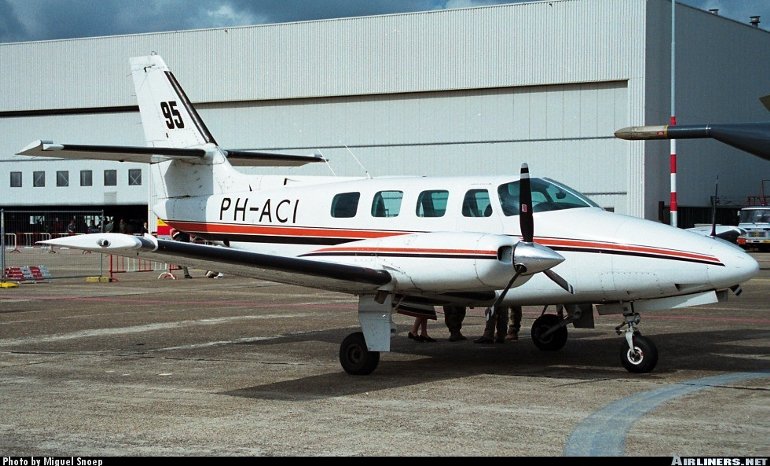Aircraft Technical Data
Cessna T303 Crusader

| Details | |
| Country of Origin | United States of America |
| Type | Six seat corporate and utility transport |
| History | Cessna's Model 303 started life as a four seat twin, intended for the hotly contested light transport and training role. <p>One four seat 303 was flown for a time from February 14 1978. Powered by two 120kW (160hp) Lycoming O320 engines it would have competed against the Beech Duchess, Grumman GA7 (Cougar) and Piper Seminole. However, a reappraisal of market demand for aircraft in this already crowded class led to Cessna rethinking the 303 design, and the outcome was a larger aircraft. Instead the resulting six seater aircraft was intended to replace Cessna's 310, then nearing the end of its production life. <p>The new model, designated the T303 for its turbocharged (and fuel injected) Continental TSIO520 engines, flew for the first time on October 17 1979. Certification was granted in August 1981, and first production deliveries commenced in October 1981. For a time the T303 was named the Clipper, but this was changed to Crusader as PanAm held the rights to the Clipper name. <p>In its definitive form the T303 incorporated a number of advanced features, being the first entirely new piston twin from Cessna in over a decade. Features included bonded structures around the integral fuel tank, a supercritical wing section and counter rotating propellers, while standard equipment included integral airstairs and a full IFR avionics suite (Cessna claimed the latter as a first for its class). <p>Only minor changes were introduced during production, including the addition of anti ice equipment as an option in 1982, and in 1983 the rear cabin bulkhead was moved aft slightly which increased baggage space and allowed the addition of a cargo door. <p>Production of the Crusader wound up in 1985 as part of the general decline in light aircraft sales during that period, terminating prematurely what looked to be a successful program. The cancellation also put paid to rumours that Cessna planned to develop more powerful, pressurised, and turboprop powered versions of the aircraft. |
| Powerplants | Two 185kW (250hp) Continental TSIO520AE turbocharged and fuel injected flat six piston engines driving three blade constant speed counter rotating McCauley propellers. |
| Performance | Max speed 400km/h (216kt) at 18,000ft, max cruising speed 363km/h (196kt), economical cruising speed 333km/h (180kt). Initial rate of climb 1480ft/min. Service ceiling 25,000ft. Range with max fuel and reserves at 71% power at 20,000ft 1658km (895nm), at economical cruising speed and 10,000ft 1890km (1020nm). |
| Weights | Empty 1526kg (3364lb), max takeoff 2336kg (5150lb) |
| Dimensions | Wing span 11.90m (39ft 0.5in), length 9.27m (30ft 5in), height 4.06m (13ft 4in). Wing area 17.6m2 (189.2sq ft). |
| Capacity | Normal seating for pilot and five passengers with central aisle between seats. Can be configured with a club seating arrangement for four in the main cabin, or for aerial ambulance or freighter work. |
| Production | In production between 1981 and 1985, 297 Crusaders were sold. |
| Related Links | Cessna T303 Crusader |
The backbone of this section is from the The International Directory of Civil Aircraft by Gerard Frawley and used with permission. To get your own copy of the book click here. |
|








